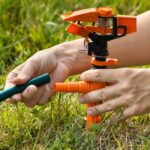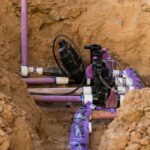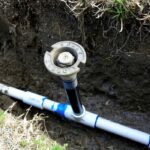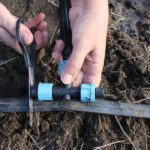Have you ever wondered how a lawn sprinkler system operates? It’s relatively simple, but there’s more to it than just turning on the water and letting the sprinklers do their thing. Even though there are different sprinkler systems available, they all work in a relatively similar manner.
A sprinkler system uses a network of pipes connected to a water source. Activating the system allows water to flow through the pipes and out of the sprinkler heads. Water pressure in the pipes forces the heads to rotate, allowing the water to disperse over the targeted area.
Now that you’ve got the general idea, let’s take an in-depth look at how sprinkler systems operate, the most common types of sprinklers, and the parts that make up a typical sprinkler system. Plus, we’ll learn how to maintain a sprinkler system so that it continues to work effectively for years to come.
How Do Sprinkler Systems Work?

A sprinkler system is an irrigation method that uses a series of pipes and valves to deliver water to plants or lawns. Underground pipes connect to a water source, such as a well or municipal water supply, to deliver water.
The pipes are equipped with valves that open and close to regulate the water flow. A series of emitters, or sprinklers, are connected to the pipes. The emitters release water from the pipes in a controlled manner, providing an even distribution of water to the lawn or garden.
Sprinkler systems can operate manually or automatically. Automatic sprinkler systems have a timer (on Amazon) that turns the system on and off at specific intervals, allowing for consistent watering of the area on a schedule.
When the cycle is activated, water pumps from your home’s main water supply through a series of PVC pipes to the sprinkler heads. The water pressure in the pipes helps to rotate the sprinkler heads so that they can evenly distribute water over the desired area.
What Different Parts Make Up a Sprinkler System?
Several different parts make up a typical home sprinkler system. These parts include:
- A control panel or timer helps you set the schedule for your sprinkler system.
- A main water supply line carries water from your home’s main water supply to the sprinkler system.
- PVC pipes carry water from the main supply line to the sprinkler heads.
- A backflow preventer (on Amazon) helps to prevent contaminated water from flowing back into your home’s drinking water supply.
- Sprinkler heads are responsible for distributing water evenly over your landscaping.
What Are the Most Common Types of Sprinklers?
Several types of sprinklers are available on the market, each with its own advantages and disadvantages. The most common are impact, rotor, and pop-up sprinklers. Let’s take a closer look at each one:
Impact Sprinkler
The impact sprinkler gets its name from how it works: A weighted arm spins around in a circle, propelling the watering nozzle up and out in a spray pattern.
Impact sprinklers (on Amazon) are highly adjustable, so you can tailor the flow rate, spray pattern, and radius to meet your specific needs. They’re also relatively inexpensive and easy to install, making them a great option for first-time buyers.
However, because they rely on mechanical components, impact sprinklers are more likely to break down over time and require more maintenance than other types.
Rotor Sprinkler
Rotor sprinklers are very similar to impact sprinklers; they also have a spinning arm that propels the watering nozzle up and out in a spray pattern.
However, rotor sprinklers (on Amazon) use a gear-driven motor instead of being driven by a weighted arm. That makes them more expensive than impact sprinklers, but it also makes them much more durable; rotor sprinklers rarely break down and require very little maintenance over their lifespan.
Another advantage of rotor sprinklers is that they’re very efficient; because an internal valve regulates the water flow, there’s very little water waste. But, because they rely on moving parts, rotor sprinklers can be more susceptible to clogs than other types of sprinklers.
Pop-Up Sprinkler
Pop-up sprinklers are the most common type of sprinkler found in home landscaping. They’re called “pop-ups” because they sit flush with the soil when not in use; when it’s time to water, they rise out of the ground and release water through a series of small holes or nozzles.
Pop-up sprinklers (on Amazon) are very easy to install and maintain, and they’re relatively inexpensive. They’re also quite versatile; you can find pop-up sprinklers with different flow rates, spray patterns, and radius settings to meet your specific needs.
The main disadvantage of pop-up sprinklers is that they’re not as efficient as other types of sprinklers; because water releases through small holes, there’s a lot of evaporation and wind drift. So, you’ll need to water your lawn longer to ensure the roots get enough moisture.
How Are Sprinklers Installed?
A professional can install sprinkler systems, or you can do it yourself. Because there’s some digging involved, you’ll need to be aware of underground utility lines to avoid any damage. Plus, you’ll need a basic understanding of plumbing and irrigation before attempting a DIY installation.
If you’re not comfortable doing it yourself, it’s recommended that you hire a professional who will install your sprinkler system quickly and efficiently. They can also offer guidance on the best type of system for your needs.
Installing a sprinkler system is generally a three-step process:
1. Design the System
Designing the system involves figuring out the best location for the sprinklers, underground piping, and control panel. You’ll also need to determine the type of sprinkler heads you want to use and the flow rate and radius.
2. Install the Sprinklers
Installing the sprinklers involves digging trenches for the underground piping and connecting the pipes to the control panel. Then, you’ll need to install the sprinkler heads and connect them to the pipes.
3. Test the System
To test the system:
- Turn on the water and check for leaks in the piping.
- Activate the sprinklers to make sure they’re working correctly.
- Adjust the heads as needed to get the desired spray pattern.
Installing a sprinkler system is a relatively simple process, but it’s essential to do your research before getting started. Understanding the basics of how sprinklers operate ensures that your system works correctly and efficiently.
How Do You Maintain a Sprinkler System?
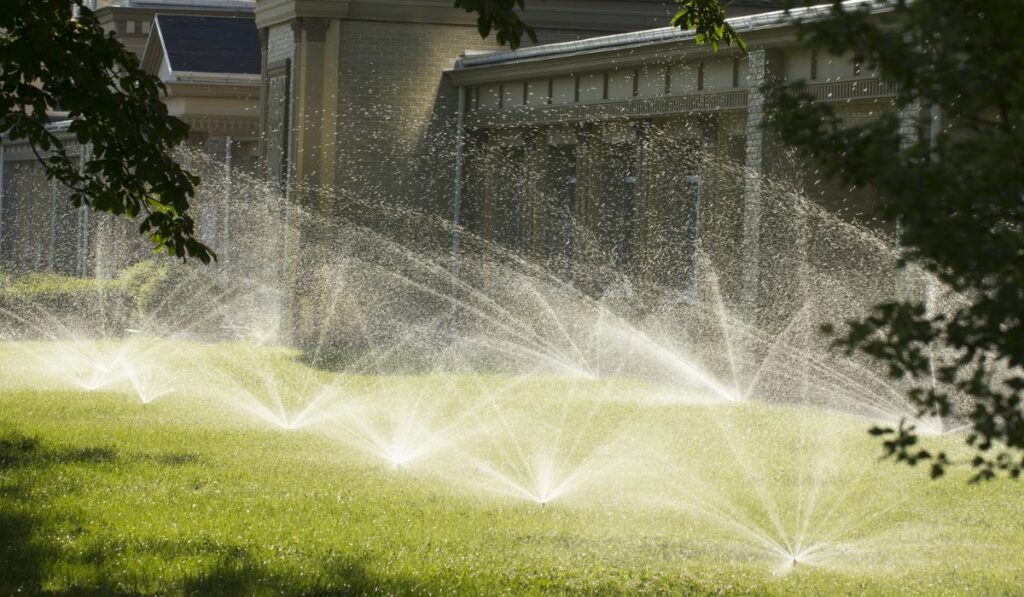
Like any other machinery, a sprinkler system must be properly maintained to function at its best. Here are some tips on how to keep your sprinkler system in good shape:
- Inspect the system regularly. Check for any signs of wear and tear, such as cracks or leaks in the pipes. If you notice any damage, repair it immediately.
- Keep the system clean. Regularly clean the filters and other components to remove any dirt or debris that could clog up the system.
- Test the system periodically. Perform a test run of the sprinkler system to ensure it works properly.
- Make adjustments as needed. If you notice that the sprinkler system is not working as efficiently as it should, make the necessary adjustments to improve its performance.
By following these tips, you can ensure that your sprinkler system will continue to operate effectively for years to come.


